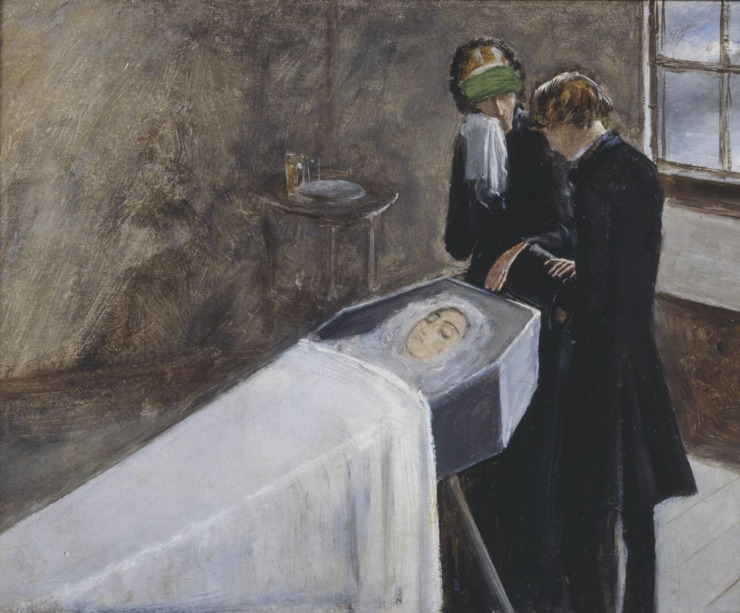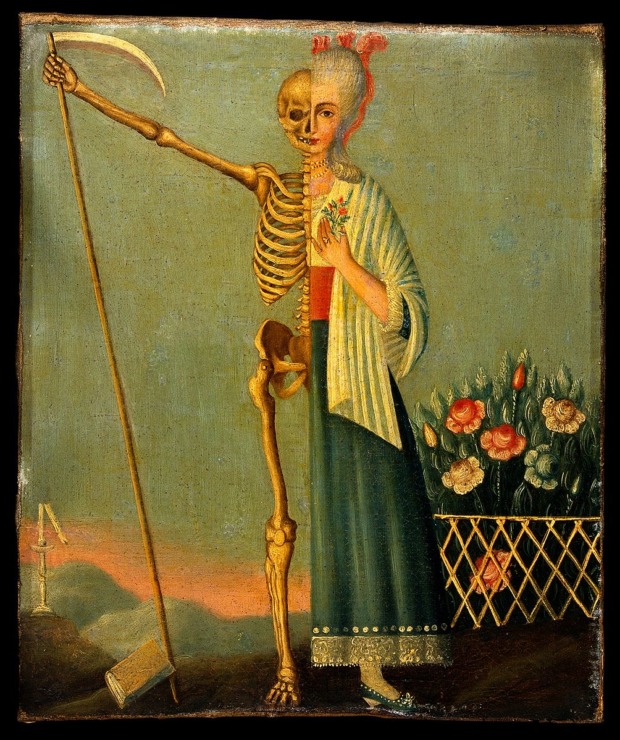< Return to Edgar Allan Poe Poems
A Pæan
How shall the burial rite be read?
The solemn song be sung?
The requiem for the loveliest dead,
That ever died so young?
Her friends are gazing on her,
And on her gaudy bier,
And weep!—oh! to dishonor
Dead beauty with a tear!
They loved her for her wealth—
And they hated her for her pride—
But she grew in feeble health,
And they love her—that she died.
They tell me (while they speak
Of her “costly broider’d pall”)
That my voice is growing weak—
That I should not sing at all—
Or that my tone should be
Tun’d to such solemn song
So mournfully—so mournfully,
That the dead may feel no wrong.
But she is gone above,
With young Hope at her side,
And I am drunk with love
Of the dead, who is my bride.—
Of the dead—dead who lies
All perfum’d there,
With the death upon her eyes.
And the life upon her hair.
Thus on the coffin loud and long
I strike—the murmur sent
Through the gray chambers to my song,
Shall be the accompaniment.
Thou diedst in thy life’s June—
But thou didst not die too fair:
Thou didst not die too soon,
Nor with too calm an air.
From more than friends on earth,
Thy life and love are riven,
To join the untainted mirth
Of more than thrones in heaven.—
Therefore, to thee this night
I will no requiem raise,
But waft thee on thy flight,
With a Pæan of old days.
-Edgar Allan Poe
Enjoy Artistic Representations of “A Pæan” by Edgar Allan Poe

The Artist Attending the Mourning of a Young Girl, circa 1847 by Sir John Everett Millais.

Life and death. Oil painting.
Listen to Readings of “A Pæan”
Listen to this Musical Interpretation of “A Pæan” by Edgar Allan Poe
That’s it for readings of A Pæan by Edgar Allan Poe!
About Edgar Allan Poe
Edgar Allan Poe (1809-1849) published his first collection of poems, Tamarlane, and Other Poems, in 1827, when he was 18 years old. A tendency to run up debts (including for gambling) kept him in constant state of reinvention – college student, poet, short story writer, soldier/officer school, literary journal editor and critic.
The Poe who arises from Symons’ hand (his biographer in The Telltale Heart: The Life and Works of Edgar Allan Poe) is a man who first and foremost was determined to put Southern letters on the map, aiming to wrest control from the literary establishment in New York and New England (Poe aimed some rather pointed arrows at writers like Henry Wadsworth Longfellow). For his own writing, he wanted to be considered a poet. The poems were the important works; the stories were almost after-thoughts, almost dashed off primarily to raise funds. And he always needed money.
His personal life seemed to have stayed a general mess, but he had an enormous impact on both American and world literature. Consider the stories and poems that have been filmed, published, re-published, anthologized, celebrated and widely admired for more than 150 years: “Murders in the Rue Morgue,” “Fall of the House of Usher,” The Raven, “The Tell-Tale Heart,” Annabel Lee, “The Bells,” “Ulalame,” “To Helen.”
We associate Edgar Allan Poe with 19th century gothic. His stories are full of mystery, passion, horror, violence, death, and the supernatural. And yet his poems, especially “The Raven” and “Annabel Lee,” made him famous in pre-Civil War America and established his literary reputation.
Questions and mystery surrounded Poe’s own life and death, and continue even today – we may never know who left three roses and a bottle of cognac on his grave in Baltimore for decades until 2011 (alas, the “Poe Toaster” disappeared or died, to be seen nevermore).
You can read more about Poe’s biography in the articles Poets and Poems: Meeting Edgar Allan Poe and Forgotten Classics, The Telltale Heart by Julian Symons by Glynn Young, from which this biography was compiled.
I hope you enjoyed A Pæan by Edgar Allan Poe!
BUY ‘HOW TO WRITE A FORM POEM’ NOW!
